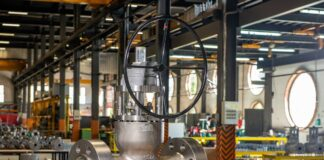Learn why selection of raw materials affects forging foundry outcomes and enhances the quality, strength, and manufacturing speed.
The quality and type of raw materials is what decides the outcome of any manufacturing process.
In the process of metal forging, the right raw materials to a great extent decide the strength, functioning of the final product, and the extent to which the latter is a quality product.
The need to select the proper material has resulted from the growing demands for lighter yet stronger and more complex components within the industries.
This post is about to discuss the significant parameters that have an impact on raw material selection and the correlation to the efficiency and reliability of the metal forging process.
Importance of Raw Material Selection in Forging foundry
Find out how raw material choice plays a crucial role in constructing the foundry, which defines the rigidity, durability, and efficiency of products in industrial settings.

Why Raw Material Selection Matters
The Foundation of Durability and Strength
In forging, the raw materials used become the basis for the toughness and strength of the final product. Every metal and alloy possesses different mechanical properties like tensile strength, hardness, and resistance power against corrosion.
For instance, the automobile sector often requires parts from forgings that are able to withstand extreme pressures and temperatures. The producers ensure that the components remain intact and maintain their integrity over a long period so that the probability of failure can be kept to its minimum with high-grade steel or other alloys.
However, when a material of lower quality is chosen, the product that results from it might not meet the performance criteria.
This can eventually cause poor wear and tear of a critical machine, which becomes much more costly in maintenance or ultimately leads to complete failure of a crucial machine.
Thus, a good material choice at every application is essential for the long-term performance of the product.
Also Read: All About Forging Foundry: Processes, Tools, and Industry Insights
Cost Efficiency and Waste Reduction
Another key area to the overall cost effectiveness of the forging process is that of raw material used. While expensive raw materials are obviously the higher grade, they often produce less waste and defects in the finished product.
This can cut a whole lot of reworks and ensure that the first piece of every product line meets the specification at all times. Optimized raw material utilization enables the amount of excess waste built into the procedure to be minimized, thereby reducing production costs while also incorporating a connection with sustainability goals.
Use of advanced materials, such as lightweight alloys, can, therefore, offer cost savings in downstream processes, like shipment and installation. The use of lighter materials saves transportation costs and makes products more efficient.
In cases where a product’s weight has to be reduced, for example, in aerospace and automotive industries, cost savings show direct hits on the bottom line and overall efficiency from the production level.
Also Read: Top 7 Benefits of Forging Foundry for Stronger, Durable Parts
Factors to Consider When Selecting Raw Materials
Mechanical Properties of Materials
When forging raw materials, knowledge of the mechanical properties of various metals forms an important consideration. All these factors decide how the metal would react under the extreme forging process. Before a material gets selected for use, manufacturers have to consider the intended application and the conditions under which this will be used.
Material Availability and Consistency
Availability is the other crucial component for consideration in the selection process. A manufacturer has to ensure that they have an adequate supply of material that will serve them during the forging process.
Inconsistent distribution will cause variations in the quality of material and poor production of forgings. Moreover, customers may be bound to experience delivery difficulties and long lead times whenever there is a lack of availability of raw material, which may be rare or difficult to source.
Summary In brief, buying from reputable sources assures the manufacturer of a steady supply of good materials that meet the required specifications. The good rapport between the company and the suppliers also lowers the risks of possible breakdown in the supply chain.
Also Read: The Latest Trends and Innovations in Forging Foundry Technology
Heat Treatment Compatibility
The raw material must also be available in the necessary form and able to withstand heat treatment without deteriorating its properties. While heat treatment may change the microstructure of the forged parts and thus improve the mechanical properties, not all materials respond favourably to heat treatment.
As a consequence, some alloys become brittle or lose strength. Tool steels will attain much higher hardness and improved wear properties.
Proper material selection, which is compatible with the heat treatment process used, will improve the overall performance of forged components coming from manufacturers.
Whether the strength, toughness, or fatigue resistance actually improves depends on the intended use of the product. Inadequate considerations on compatibility with heat treatment result in poor results and a reduced life of the product.
Related: Purchase a Good Quality Air Compressor for Your Home
How Raw Material Selection Affects Different Industries
Automotive Industry
Raw material choice is therefore an integral part of the car business, ensuring safety, efficacy, and quality. Some of the other crucial component types used in a vehicle comprise crankshafts, gears, and connecting rods.
These components are under immense stress as long as they are operational. Thus, the strength offered by alloyed steel assists in delivering parts that prove to be least susceptible to routine use, thus reducing any periodic maintenance over time.
Besides, the demand for light-weight automobiles has also introduced more and more aluminium and other light alloys as an integral part. These lighten the vehicle, increase its fuel efficiency, and reduce emissions.
Through selective judgments related to raw materials, car manufacturers can balance performance, safety, and sustainability in harmony.
Related: Key Components and Working Principles of Air Refrigeration Systems
Aerospace Industry
Various materials in the aerospace industries help support their operations mainly through excellent strength-to-weight ratios. Additionally, materials such as these should be resistant to very high temperatures and pressures.
For instance, turbine blades, landing gears, and structural parts that form parts of these categories are usually made of titanium and aluminium alloys. The many strengths of titanium and aluminium alloys are where they hold large forces. Low weight contributes to fuel efficiency and lowers the cost of operating, hence the usage.
The selection of raw material, like in aerospace, is also safety-critical; indeed, aerospace demands components to be reliable and not lose their integrity under extreme conditions. The failure of material at a point means a complete crash. Therefore, selecting high-quality, proven materials for such applications is very important indeed.
Related: XCV Panel Features, How to Use, Install, Pros and Cons
Conclusion
Choosing raw materials is yet another very important element forming forging processes that are in reality directly related to the quality, performance, and price efficiency of the resulting product.
Knowing their mechanical properties, availability, and compatibility would enable the manufacturer to optimize the production process and even develop some strong, specific, and high-performance components.
As forging foundry become more evolving, further improvements in material science will create a better future for forging by providing their manufacturers with much-needed capabilities to meet consumer demands for stronger, lighter, and more efficient products.









